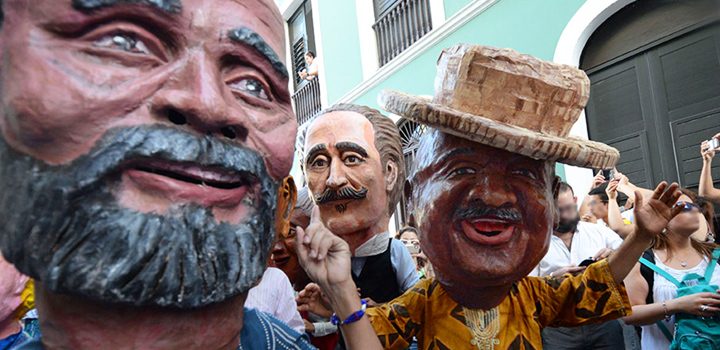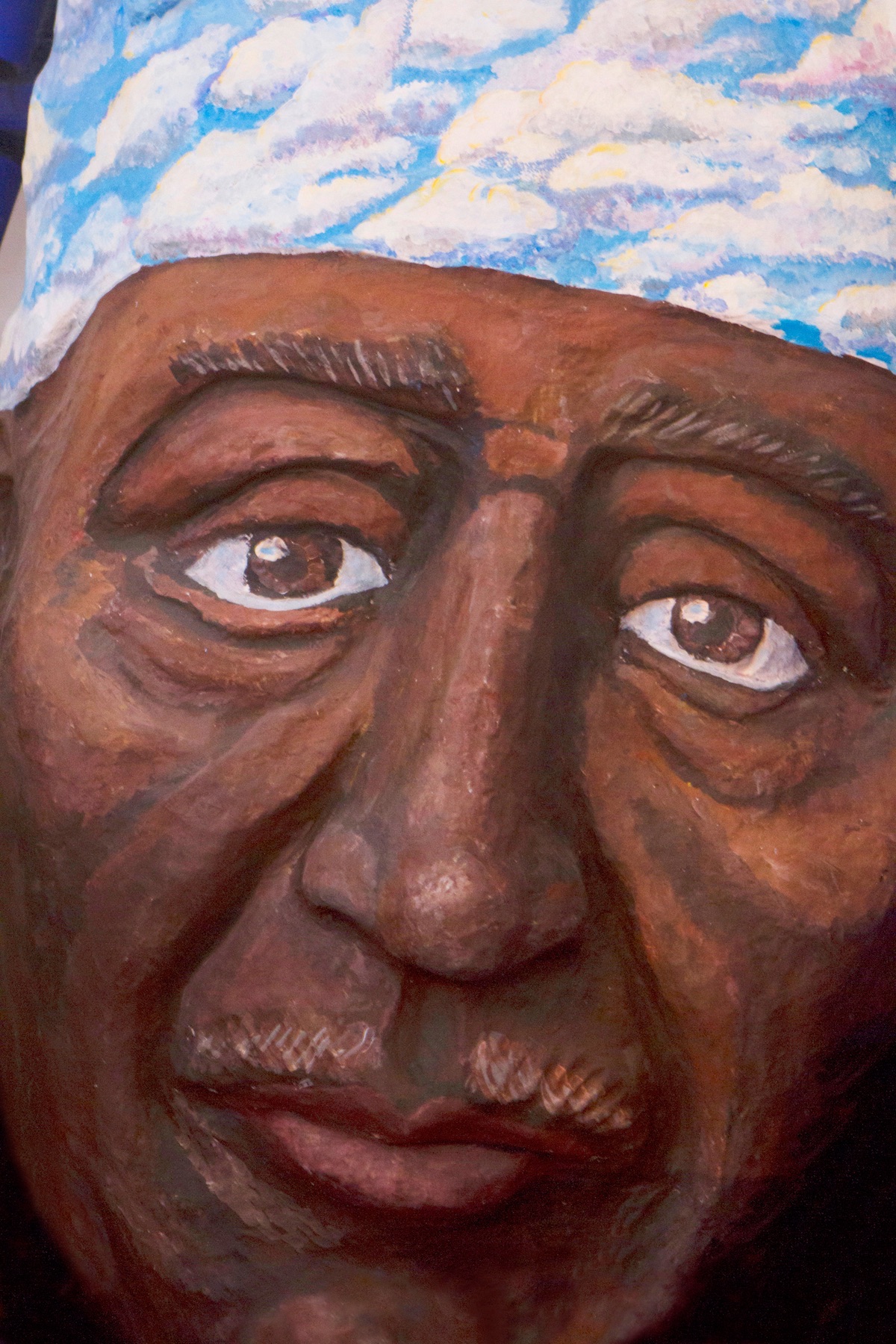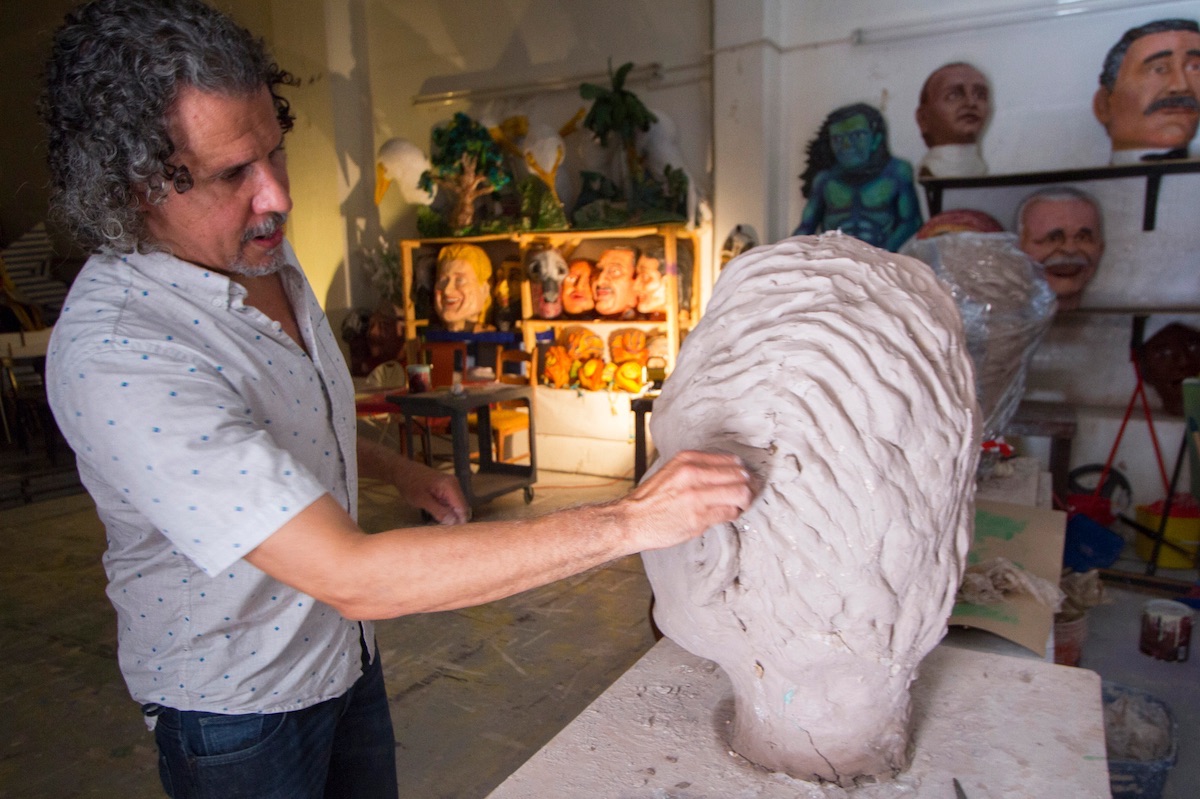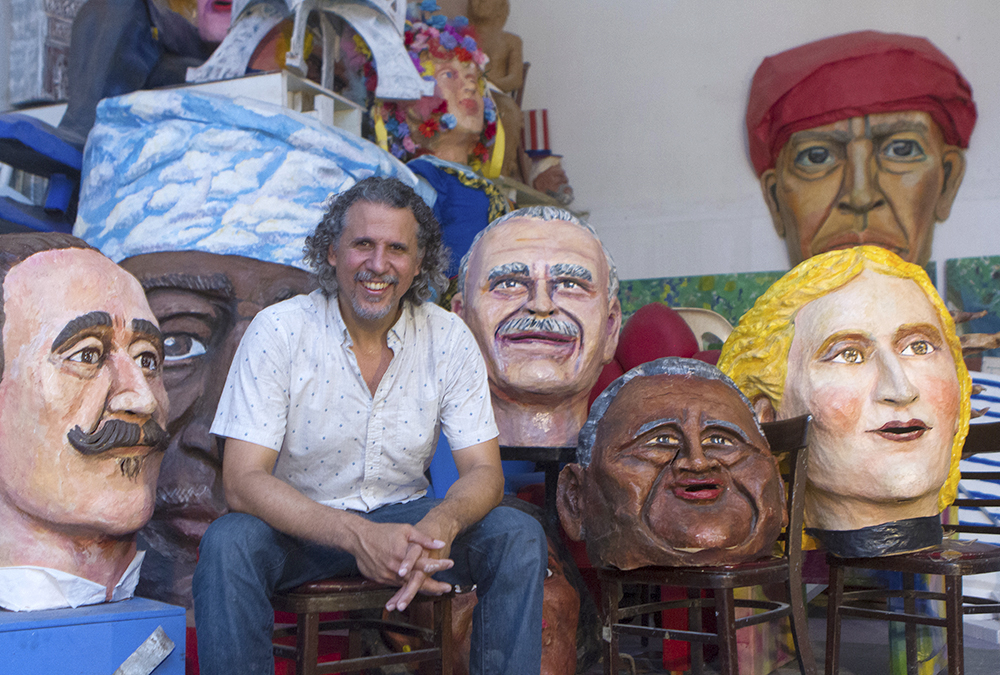The century’s old tradition of full head puppets is alive and right in the heart of Puerto Rico’s largest street festival in Old San Juan
“Hurry up, the cabezudos parade is going to start!”
People are scrambling for a great spot to see the action, dads are carrying small children over their arms, and everyone has their phones out ready to take pictures or record. Nobody wants to miss the action.
The narrow street in Old San Juan is packed because the cabezudos, known as bigheads or full head puppets, are about to begin the colorful march that kicks off the traditional Fiestas of San Sebastian Street (the Fiestas), held every year on the third weekend of January. It’s a huge popular celebration that has become the largest festival in all of the Caribbean, equivalent to the island’s very own Mardi Gras.
The crowd jams out to the middle of the street and once the loud countdown reaches zero the city mayor cuts the ribbon of official ceremony, cheers erupt and the Fiestas have begun.
Then the cabezudos begin their march down the street to the beat of traditional plena drums and chants and a feisty marching brass band is immediately joined by hundreds of spectators old and young, who instantly turn from audience to participants in the swinging and joyful trek. Some of the first cabezudos that appear depict historical or folk characters of the Old City, like Doña Fela, the famous mayor of the 40’s and 50’s known for her towering Marge Simpson- style hairdo or Diplo, a popular comedy character from the same era.
Children giggle and point at the cabezudos or try to touch them while others just stare in awe. “The cabezudos parade is one of those things that make me feel like a little boy again,” said a smiling David Padilla, who is a 55 year-old resident of San Juan who never misses the event.
Next come the comparsa or marching crew of the Agua Sol y Sereno theater company, with an explosion of energy and circus-like ambiance. More than 40 finely crafted cabezudos and giant puppets among a colorfully clad of stilt walkers manage to dance to the tropical rhythm of plena.
“I remember as a kid I was so excited to be in the cabezudos parade!” said Maria Muñoz, a 20 year-old college student from the west coast of Puerto Rico. It also made me so curious that I would bombard my parents with questions about who those characters were and their history. It’s a very exciting event and when I have kids I will definitely bring them to the parade and the Fiestas.”
Medieval roots
The tradition of the cabezudos began in Spain around the 12th century specifically in festivities in northern Basque Country, and in the provinces (then kingdoms) of Aragon and Valencia, among others. According to Spanish historian Javier Aparicio, the tradition became widespread as the catholic kings conquered Spain again from Islamic rule in the late 15th century. The reason, according to Aparicio, was that Islamic law prohibited depictions of saints and even ordinary people so when the Catholics regained power these restrictions were eliminated and the use of cabezudos and giant puppets proliferated through most regions.
In Puerto Rico it all started in the mid 1950’s when the parish priest in Old San Juan’s Church of San Jose organized a religious procession mixed with music and festivities to honor Saint Sebastian, the patron of the street where the temple was built and situated in 1511.
The priest, Juan Manuel Madrazo, a native of the northern Basque Country of Spain, started the festivity to help finance the repairs of the San Jose church, the second oldest Christian temple in the Americas, as well as a school he was starting in Barrio La Perla, which lies just outside the ancient city walls.
Father Madrazo went to Spain for vacation and came back with two giant puppets, known also as gigantones and a couple of cabezudos. The Basque Country of Spain is one of the regions where this tradition has been in place for centuries.
The cabezudos brought by father Madrazo were called sanchos, after the famous literary character of Don Quijote’s partner and a symbol of the ordinary man of the village. The two giant puppets depicted the 16th century Catholic kings of Spain, Fernando and Isabel, precisely the ones who conquered Spain for the second time from the Islamic rulers and sent Christopher Columbus off to conquer the New World.
So these colorful puppets of enormous heads designed to stand out in a crowd became the heart and soul of the Fiestas, kicking off the festivities with a parade along the street that featured the cabezudos along with marching bands. The event was celebrated during the 1950’s and it was a great neighborhood block party for residents of Old San Juan but unknown to the rest of Puerto Rico.
From block party to carnival
After father Madrazo was transferred out of the city in the early 60’s the Fiestas also came to an end and seemed destined to become a brief chapter in the city’s history. But 15 years later during the mid-70’s a group of neighbors led by Rafaela Valladares reinstated the Fiestas and added an artisan crafts fair and a night of traditional dances. By that time Old San Juan had become the favorite hangout for the young, and the festival quickly stopped being a neighborhood affair. Every year the spontaneous partaking of popular musicians and people just dancing and singing in the streets spread. The original cabezudos of father Madrazo were now reinforced with other cabezudos like the folk tale character Juan Bobo (John the Fool), comedy character Diplo and The General, representing a colorful wacky character of the Old City that used to dress up in military uniform full of medals and acted as an unofficial neighborhood cop.
The festival became so massive that it spilled out from San Sebastian street to other areas of Old San Juan, and it also features free outdoor concerts with top bands and performers.
“What started out as a small community celebration has become Puerto Rico’s carnival,” said Pedro Adorno, director of Agua Sol y Sereno, which produces the biggest marching crew at the Fiestas.
Forging traditions
Adorno’s squad not only performs but it also has taken up and upgraded the tradition of producing cabezudos, gigantones, and giant masks.
His love affair with cabezudos started in 1990 when he and his wife Cathy Vigo went to Vermont to work and live with the renowned Bread & Puppet Theater Company which works with full heads and giant puppets.
“We started at the Fiestas 20 years ago in a comparsa of stilts and cabezudos, without even an invitation. We just got there and did our thing,” Adorno laughed. After five years of unofficial participation, Agua Sol y Sereno became an integral part of the opening day parade for the past 15 years at the Fiestas.
“Our crew has between 40 and 50 members, including zanqueros (stilt walkers), cabezudos, and people from the community. We march with most of our cabezudos and we feature a new one each year. People expect us to be there and they want to see what new cabezudo we introduce each year,” Adorno said.
The cabezudos parade that opens the Fiestas each year is led by the official crew that features the traditional puppets of the neighbors organizing committee, and was personally led by Doña Rafaela until she passed away in 2011. Then it’s Agua Sol y Sereno’s turn with its massive team.
“We have never copied the original cabezudos of the Fiestas to respect the space of their crew which is important because we want to honor the tradition started by Doña Rafaela. We are very happy to give continuity to what was started, now in an independent way, by developing new characters,” Adorno added. “They don’t make cabezudos of living people but we do. We have a cabezudo of Andy Montañez, well-known Puerto Rican salsa singer who was the singer of El Gran Combo band; so we have kept the tradition, but have made it grow.”
Adorno recalls that during the first decade, the group designed the cabezudos based on anonymous community characters. “They were more like archetypes, the grandpas, and the farmers.”
Then the Tras Talleres community requested a cabezudo of hometown celebrity Montañez who was being honored at the annual festivity. “Andy’s mom saw the cabezudo in the middle of the Fiesta, and it was so emotional because she began kissing it and cried. It was at that specific moment when I understood the importance of our work and how the cabezudos depict the living and deceased who we wanted to honor,” Adorno said.
Today, the cabezudos represent historical characters, painters, writers, patriots, composers, whether alive or deceased and also everyday people who become icons like Don Saul, the street vendor of white lilies in the Old City.
The making of the puppets
As for the technique used to make the cabezudos, Adorno says he keeps doing what he learned from his teacher Peter Schumann, founder of the Bread & Puppet Theater, and mixes it up with paper mache techniques learned from the mask makers of the Ponce carnival.
“We make a sculpture in clay and place it into a separator almost always made of plastic. Between the sculpture and the wet paper, we place five to six layers of paper with special organic glue, and we cut the cabezudo in half, to then be put back together,” Adorno explained. “We paint it, create a neck and open some holes where the actor can breathe and see. The cabezudo will weigh less than 12 pounds.”
Performing in the Old City for locals and visitors
Agua Sol y Sereno has been focusing their marching crew and shows with cabezudos and stilt walkers in San Juan. At the Fiestas, they not only do the opening day comparsa but also do an outdoor theater piece at the Plaza La Barandilla in Old San Juan, which features the stilts, cabezudos, gigantones, and giant masks. The difference between the gigantones and cabezudos is that the gigantones have a full body costume under the giant head and the cabezudo only has a neck and the big head. All three including the giant masks are moved around by the performers.
In October, the company also participates in Las Campechadas, a smaller but very colorful and artistic event in Old San Juan dedicated each year to a Puerto Rican painter. The event is named after Jose Campeche, Puerto Rico’s first known painter who lived and worked in Old San Juan during the 18th century.
Adorno and his company have also been holding events for the Puerto Rico Tourism Company and the Municipality of San Juan, mainly at “Puerto Rico es Fiesta,” celebrated at the San Juan Bay and some plazas in the Old City on special dates where large cruise ships arrive at the port.
The Fiestas, where the medieval cabezudo tradition has flourished with tropical flare has become a major tourist attraction. Thousands of tourists each year join the 250,000-plus crowd to celebrate the arts, traditions, and endless partying during this four-day bash. The cabezudos can also be presented as part of groups and convention activities adding a traditional festive ambiance to these events. For more information about Agua Sol y Sereno contact Jean Soto Villariny at aguasolysereno@gmail.com.




